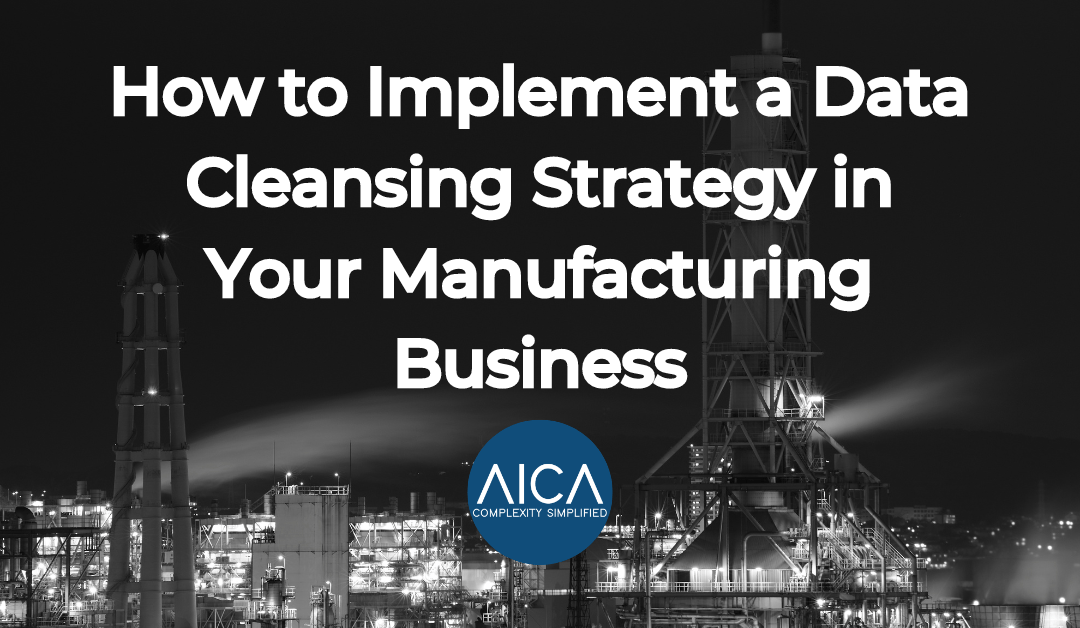An effective Enterprise Resource Planning (ERP) system relies heavily on clean, accurate data to function optimally. Poor data quality can lead to a cascade of issues, including production delays, increased costs, and lost sales opportunities. Implementing a robust data cleansing strategy is crucial to maintaining the integrity of your ERP system and overall operational efficiency.
Understanding Data Cleansing
Data cleansing is the process of identifying and correcting (or removing) corrupt, inaccurate, or irrelevant parts of a dataset. This process ensures that the data used in your systems is accurate, consistent, and useful. In a manufacturing context, data cleansing might involve correcting errors in inventory counts, updating outdated information, standardising data formats, and removing duplicate entries.
Effects of Dirty Data on ERP
Dirty data refers to inaccurate, outdated, or inconsistent information within a dataset. In the context of ERP, this could include incorrect inventory counts, inaccurate bills of materials (BOMs), or unrealistic production schedules.
The effects of dirty data on an ERP system can be profound:
– Overproduction or Underproduction: Inaccurate information can lead to incorrect production planning, resulting in excess inventory or stockouts.
– Increased Costs: Misleading data can cause unnecessary storage costs, wasted materials, and additional labour expenses.
– Production Delays: Scheduling errors due to inaccurate data can lead to delays, affecting customer satisfaction and harming your reputation.
– Supply Chain Disruptions: Incorrect data can cause ripple effects throughout the supply chain, leading to further inefficiencies and cost increases.
Implementing a Data Cleansing Strategy: AICA’s Approach
AICA specialises in providing comprehensive data cleansing services tailored to meet the needs of manufacturing businesses. Our approach is structured, systematic, and designed to ensure that your data is accurate, consistent, and up-to-date. Here’s a step-by-step guide to implementing a data cleansing strategy using AICA’s proven methodology:
1. Initial Assessment
Begin by sharing a sample CSV file with us.
The first step in our process is an initial assessment of your data. We request a sample CSV file from you, which will serve as the basis for our preliminary analysis. This sample helps us understand the current state of your data and identify key areas that require attention.
2. Data Quality Report
We analyse your data and provide a complimentary report highlighting potential data enhancements identified by our algorithms.
Upon receiving your sample data, our advanced algorithms scrutinise it for common issues such as inaccuracies, inconsistencies, and missing information. We then generate a detailed Data Quality Report, free of charge, which outlines the potential data enhancements and highlights areas that need improvement.
3. Proof of Concept
We demonstrate the value of our approach through a paid pilot project.
To showcase the effectiveness of our data cleansing solutions, we offer a Proof of Concept (PoC) through a pilot project. This phase involves a thorough cleansing of a subset of your data, demonstrating the tangible benefits of our approach. It allows you to see firsthand how clean data can enhance the performance of your ERP system.
4. Main Project
Our team cleanses and enriches your data using the robust AICA platform, supplemented by manual verification from our expert partners.
Once the PoC is successful, we proceed with the main project. Our robust AICA platform, combined with manual verification by our expert partners, ensures comprehensive data cleansing and enrichment.
We address issues such as:
- Poor Language Rectification: Correcting language errors to enhance data readability and consistency.
- Missing Data Addition: Filling in gaps to ensure completeness of information.
- Anomaly Detection: Identifying and rectifying data anomalies that could affect MRP outcomes.
- Corrupt Data Detection and Rectification: Detecting and correcting corrupted data entries.
- Deduplication: Removing duplicate entries to streamline data and prevent redundancy.
5. Integration and Ongoing Support
We integrate our SaaS or API into your systems, ensuring sustained high data quality across your organisation.
After cleansing and enriching your data, we integrate our Software-as-a-Service (SaaS) or Application Programming Interface (API) solutions into your existing systems. This integration ensures that your data remains clean and consistent over time. Our ongoing support guarantees sustained high data quality, helping you maintain operational efficiency and effectiveness.
Conclusion
Implementing a data cleansing strategy is essential for any manufacturing business looking to optimise its ERP system and overall operations. AICA’s structured approach to data cleansing ensures that your data is accurate, consistent, and reliable.
By following our methodology, you can significantly enhance the performance of your ERP system, leading to better decision-making and improved business outcomes. For more information, contact us and let us help you achieve operational excellence through superior data quality.
Copyright Reserved © AICA Data International Ltd 2024
